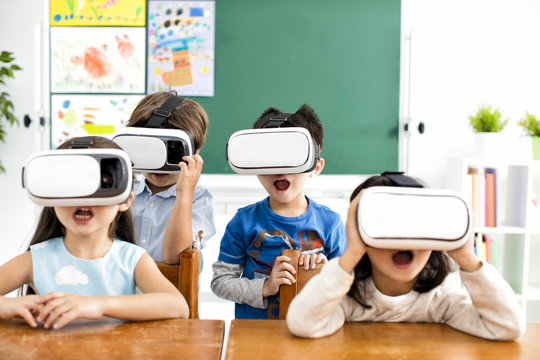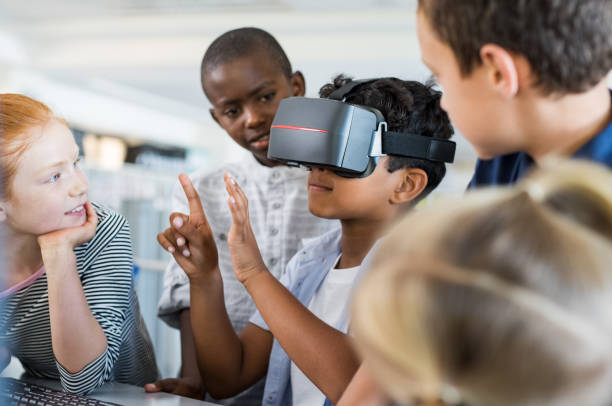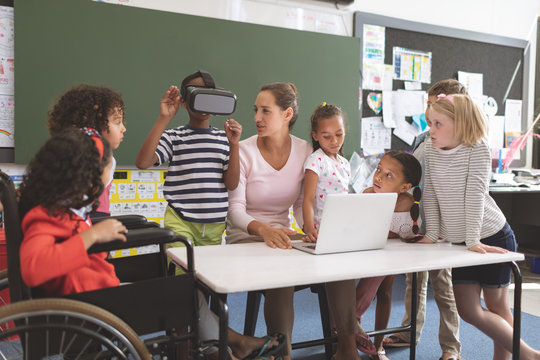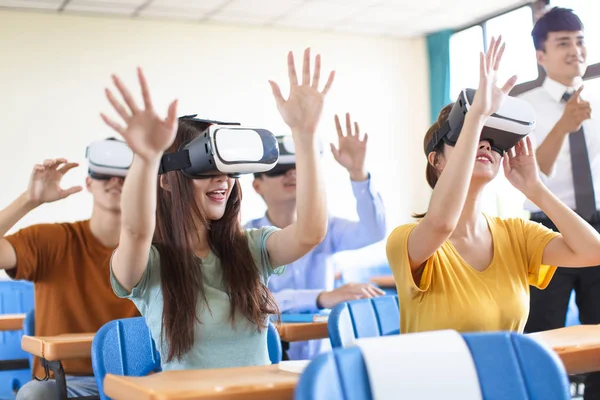As we may know, there is a significant rise in technology. Nowadays, technology can either be seen right in our own homes, right outside our windows, or in our own hands. With the rise of technology comes the inspiration for new ideas. We all love our phones. We all love playing games on our phones, reading, writing, and even watching movies on our phones. And now, thanks to new technology, there is a way to bring all that to us in a new fun experience.
Virtual Reality, better known as VR, is precisely how it sounds. A reality that is not real but is made to be with the hard work of professionals. With these new experiences, millions of people have begun to submerge themselves in the newfound experience. Being able to go for a run right in the comfort of your own home doesn’t sound too bad. But, with more work, there is a way now that not only adults but children are able to experience and learn new things, even in a classroom. VR is the future of our classrooms.

With the rise of Virtual Reality in classrooms, there are bound to be people who would prefer to avoid the idea of technology running the classroom. They may be scared that their children will become addicted to technology. Or they are afraid that technology does not teach as well as actual humans do. While these are valid concerns, VR can bring many offers to students.
The article states,
“Students expressed enthusiasm for learning with VR, with 87 percent of all responses indicating that the VR lesson was useful, enjoyable, and something students would like to learn with in the future “
Flynn, Catt, and Peter Frost. “Making VR a Reality in the Classroom.” EDUCAUSE Review, 16 Apr. 2021, er.educause.edu/articles/2021/4/making-vr-a-reality-in-the-classroom.
So, with that enthusiasm comes the progress.
The benefits that VR in classrooms may bring to the table may include the following:
Enhanced Participation: Students are captivated by virtual reality and encouraged to learn actively. Understudies can investigate and connect with subjects like history, science, and topography, making picking up drawing in and intelligent.

Experiential Learning: Virtual reality (VR) enables students to participate in experiential learning by simulating actual events. Students in engineering and medicine can practice procedures and designs, gaining confidence and practical knowledge.

Access to Unreachable Locations: VR transports understudies to distant areas and periods. They can travel, learn about ancient civilizations, observe historical events, and cultivate cultural empathy.

Individualized Instruction: VR permits fitted growth opportunities to address individual issues. Platforms can be adapted to the abilities of students, providing individualized instruction, revisiting concepts, and immediate feedback.

Social Learning and Collaboration: Students can collaborate, communicate, and solve problems in VR-facilitated collaborative learning experiences. They can interact with peers and experts from all over the world, fostering collaboration and cultural exchange.

Better retention and motivation: VR further develops understudy inspiration and maintenance. Students are captivated by its immersive nature, which results in memorable experiences and increased engagement and knowledge retention.

Virtual reality can possibly upset instruction by giving a vivid and intelligent growth opportunity. Using virtual reality in the classroom has numerous advantages. As this tech becomes more accessible, teachers should embrace its capability to establish a dynamic and viable learning climate that prepares understudies for future difficulties. Students can gain the knowledge and skills they need to succeed in the digital age by incorporating virtual reality into their classrooms.
I look forward to seeing the future with Virtual Reality in classrooms. We have the technology; we might as well use it.
Thank you!